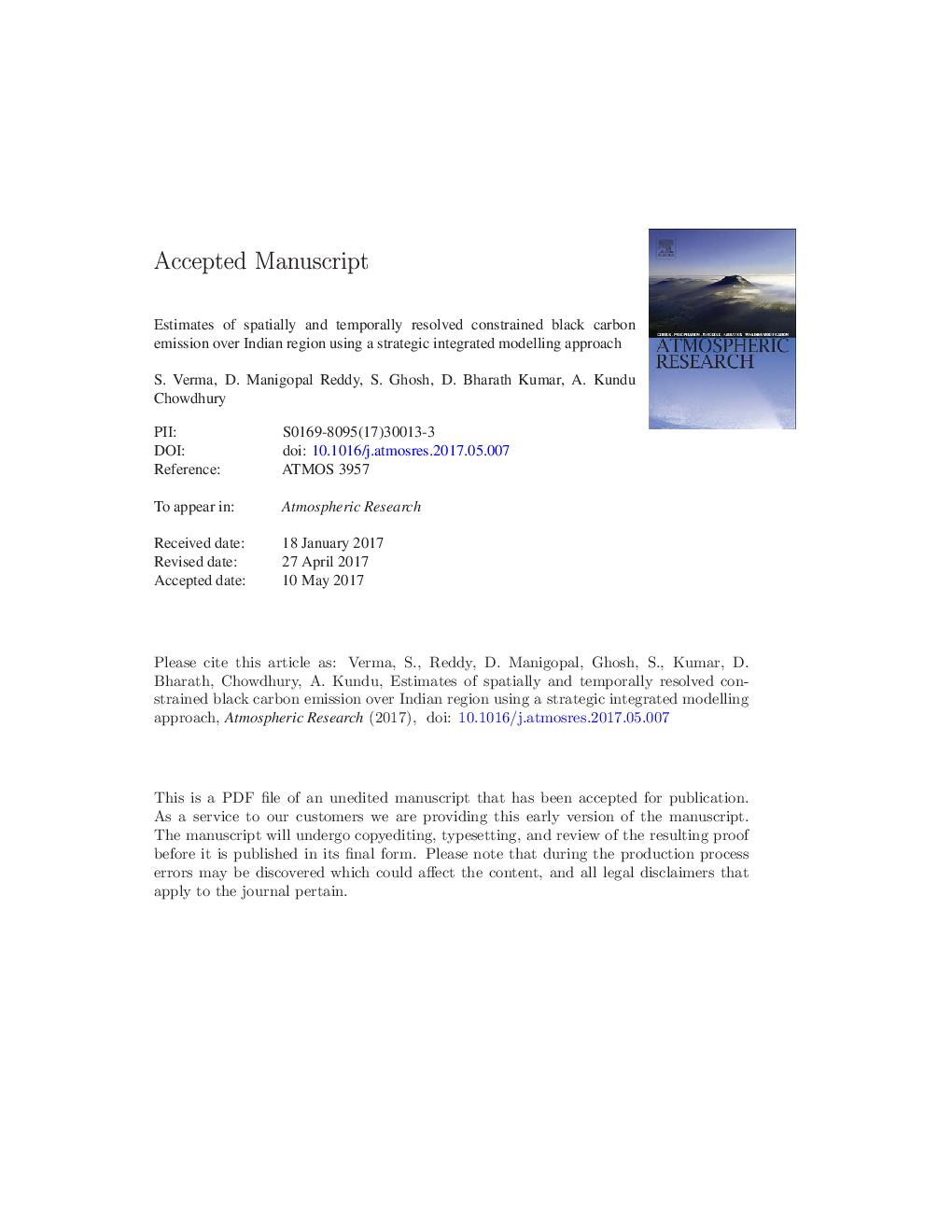| Article ID | Journal | Published Year | Pages | File Type |
|---|---|---|---|---|
| 5753768 | Atmospheric Research | 2017 | 29 Pages |
Abstract
We estimated the latest spatially and temporally resolved gridded constrained black carbon (BC) emissions over the Indian region using a strategic integrated modelling approach. This was done extracting information on initial bottom-up emissions and atmospheric BC concentration from a general circulation model (GCM) simulation in conjunction with the receptor modelling approach. Monthly BC emission (83-364 Gg) obtained from the present study exhibited a spatial and temporal variability with this being the highest (lowest) during February (July). Monthly BC emission flux was considerably high (> 100 kg kmâ 2) over the entire Indo-Gangetic plain (IGP), east and the west coast during winter months. This was relatively higher over the central and western India than over the IGP during summer months. Annual BC emission rate was 2534 Gg yâ 1 with that over the IGP and central India respectively comprising 50% and 40% of the total annual BC emissions over India. A high relative increase was observed in modified BC emissions (more than five times the initial emissions) over the most part of the IGP, east coast, central/northwestern India. The relative predominance of monthly BC emission flux over a region (as depicted from z-score distribution maps) was inferred being consistent with the prevalence of region- and season-specific anthropogenic activity.
Keywords
Related Topics
Physical Sciences and Engineering
Earth and Planetary Sciences
Atmospheric Science
Authors
S. Verma, D. Manigopal Reddy, S. Ghosh, D. Bharath Kumar, A. Kundu Chowdhury,
